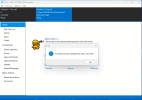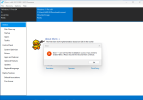OpenSource Ghost
Member
- Messages
- 86
- Reaction score
- 3
I think NTLite should include a feature to run DISM ScanHealth and DISM RestoreHealth for offline and online images.
Thanks for the suggestion. On paper, maybe, if someone configured an image manually and doesn't want to start fresh.I think NTLite should include a feature to run DISM ScanHealth and DISM RestoreHealth for offline and online images.
However, Microsoft does advertise that it's possible to repair an image as well using the "/Source:c:\test\mount\windows".
It's just I never succeeded in using that option. Tried all combinations that came to mind, repair would still fail on a broken image.
Maybe DISM fixed it in the meantime, maybe host OS can pull files online regardless of the target, I just haven't seen it in action.
Repair a Windows image using DISM. You can repair offline Windows image in a WIM or VHD file, or an online Windows image.


NTLite has .NET Assembly deletion on C:\Windows as a component, do it once and it will be in the remove reinstalls.DISM++ is perfect as a cleaning tool - especially with NET. assembly cache same way NTL do after montly (NET.) updates using RemoveReinstalls or run a preset.
Sure, I know what the .NET Assembly is, and there is a component for it in NTLite.I'm aware about that after monthly updates using NTL.
Only difference is, that DISM++ remove .NET Assembly Cache on the fly on installed Windows as the cache gets created everytime user uses a .NET depending software which seems standard nowadays to use for programmers.
Neither Ccleaner or Privazer does this for clean up of temp files.
Kind like a regular housekeeping on daily basis to make the PC/ Laptop run perfect.
Just to say i've nothing to do with DISM++ exept using.
Only think every Windows user should have a combination of different cleaning tools and make their own way to fit they goals so they have a clean stable running system.
Sorry if that's out of scope here in NTL forum.
Thanks.
